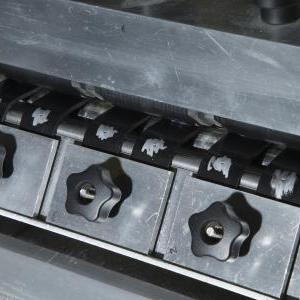Test Method: SATRA TM60
Ross flex test - resistance to cut growth on flexing
April 2020

SCOPE
This method is intended to determine the resistance of a polymeric material to cut growth during repeated flexing. To accelerate the test it is normally conducted at a temperature where the resistance of the material to cut growth is low, which may not necessarily be a temperature the material is expected to experience in normal wear. The method is applicable to most types of flexible material, especially those used in footwear solings but not leather, 9the method may however, be suitable for testing leatherboard), crepe rubber or dual-density material combinations.
PRINCIPLE
Rectangular specimens of the material are either cut from a sheet or a moulded sole, alternatively samples may be specially moulded for the test. A narrow cut is made through the full thickness of the specimen in the centre of its width. The specimen is then repeatedly flexed, about the cut position, through 90 degrees until the length of the cut has increased to a predetermined length, or a required number of flexes has been reached. The arithmetic mean cut growth rate per 1000 flexing cycles is then calculated. The thickness of the specimen is critical to the results; hence a standard thickness is used. If the material is thinner than the standard thickness, the test may be conducted in the same way but the result obtained for the cut growth rate may be lower than for a specimen of a standard thickness.
If required, the test specimens may be subjected to special treatments before testing.
REFERENCES
SATRA TM134 - Density of materials by volume displacement
SATRA TM136 - Thickness/effective thickness of soling materials and sole units
SATRA TM68 - Density of water absorbent cellular materials
HISTORY
First issued June 1971. Revised June 1987, July 1992, April 2020.
AVAILABILITY
This test method is available to members and non-members.
PRICE (ex. VAT)
This price is for a printed copy of the Test Method.
- Members: £80
- Non-members: £230


 EN
EN ZH
ZH